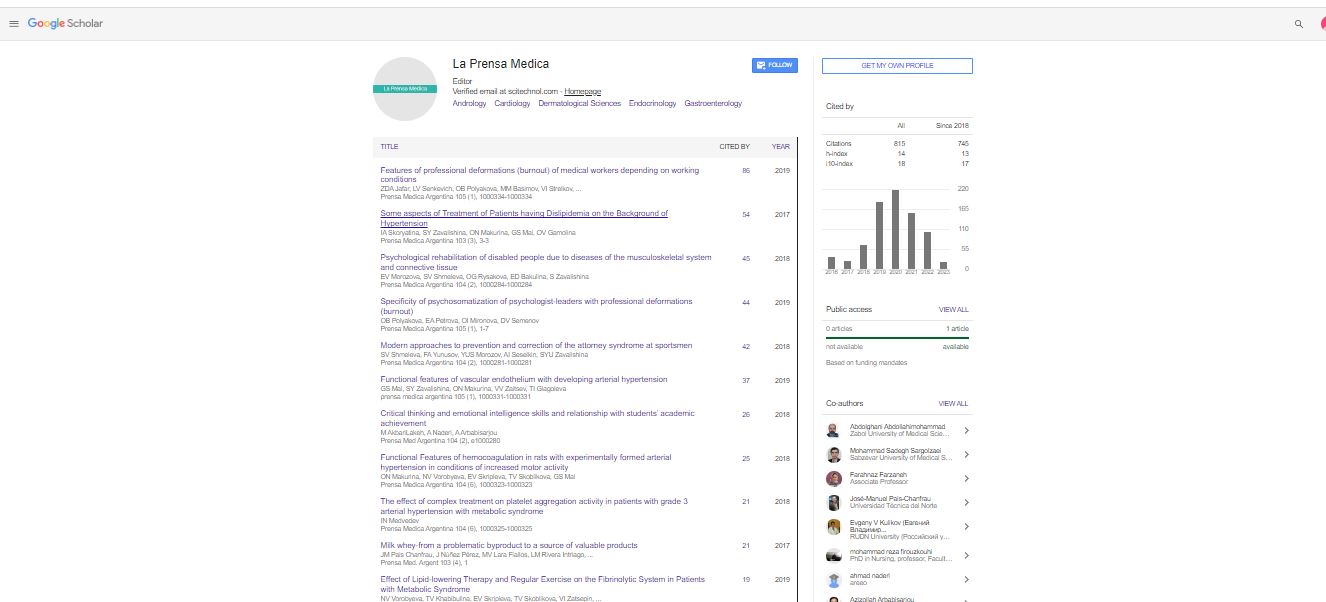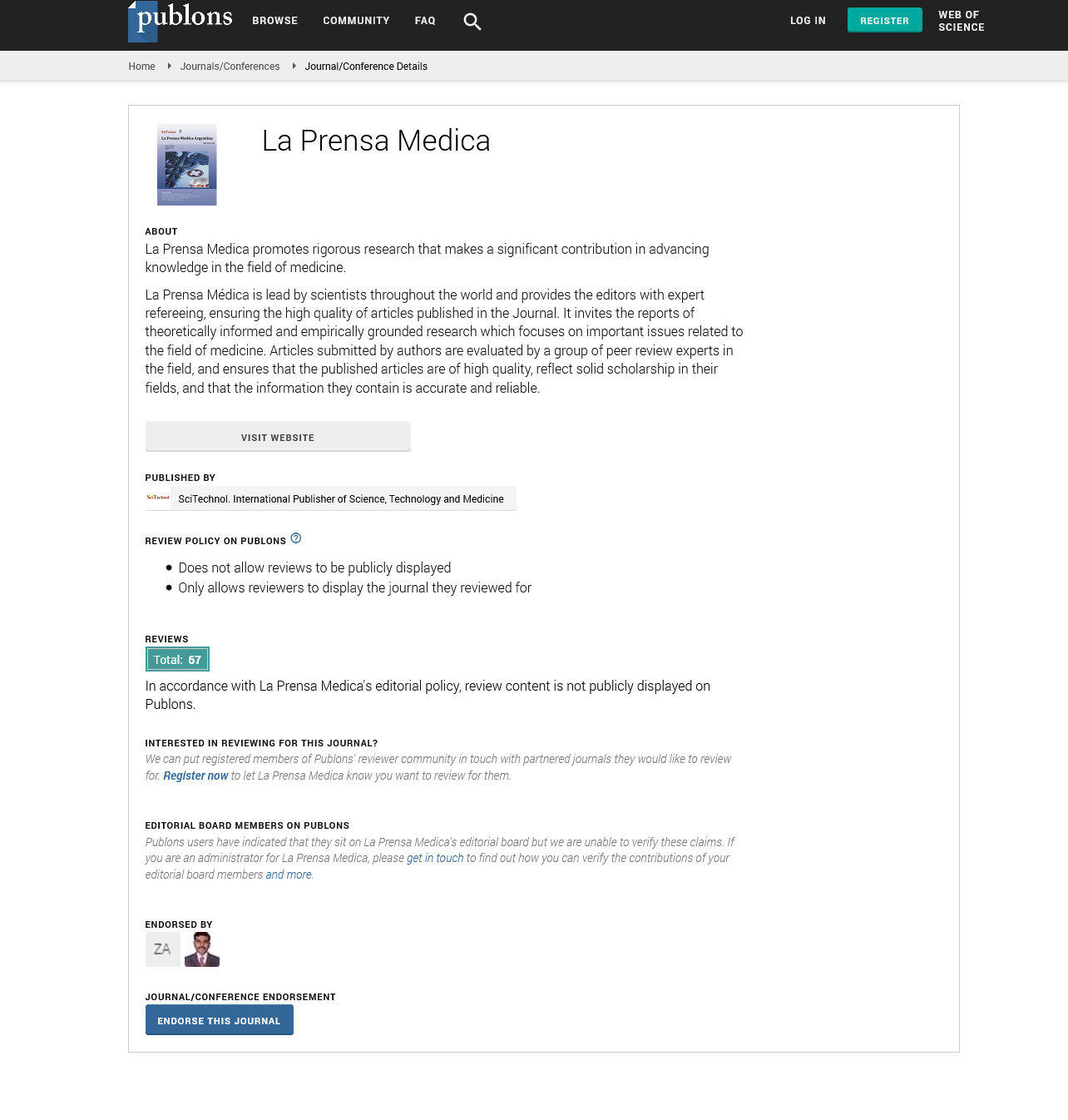Opinion Article, La Prensa Medica Vol: 109 Issue: 2
Mitigating Risks, Maximizing Efficacy: Advancing Antifungal Therapies with Enhanced Safety Profiles
Rohan Dawale*
1Department of Chemistry, Shri Madhavrao Patil Mahavidyalaya, Murum, Maharashtra, India
*Corresponding Author: Rohan Dawale,
Department of Chemistry, Shri Madhavrao
Patil Mahavidyalaya, Murum, Maharashtra, India
E-mail: dawle45@gmail.com
Received date: 25 April, 2023, Manuscript No. LPMA-23-102746;
Editor assigned date: 27 April, 2023, PreQC No. LPMA-23-102746 (PQ);
Reviewed date: 12 May, 2023, QC No. LPMA-23-102746;
Revised date: 19 May, 2023, Manuscript No. LPMA-23-102746(R);
Published date: 26 May, 2023, DOI: 10.4172/0032-745X.1000161
Citation: Dawale R (2023) Mitigating Risks, Maximizing Efficacy: Advancing Antifungal Therapies with Enhanced Safety Profiles. La Prensa Medica 109:2.
Abstract
Description
Fungal infections pose a significant global health burden, affecting millions of individuals each year. While antifungal drugs have been instrumental in treating these infections, the development of resistance and adverse effects associated with existing therapies highlight the need for novel and safer treatment options. This study explores the ongoing efforts in developing antifungal drugs with improved safety profiles. By examining innovative strategies, advancements in drug design, and emerging therapeutic targets, researchers aim to shed light on the future of antifungal therapy.
Antifungal therapy faces several challenges, including limited drug options, emerging resistance, and the potential for adverse effects. Current treatments, such as azoles, echinocandins, and polyenes have been effective, but their use is associated with varying degrees of toxicity and drug-drug interactions. Additionally, the rise of drugresistant fungal strains, particularly in immunocompromised individuals, poses a significant clinical challenge. The development of antifungal drugs with improved safety profiles is vital for enhancing treatment outcomes and minimizing the risk of adverse effects. To address the challenges of antifungal therapy, researchers are employing innovative drug design strategies. Structure-based drug design, computational modeling, and high-throughput screening techniques are being utilized to identify novel drug targets and optimize drug candidates. By understanding the molecular mechanisms of fungal infections and the interaction between drugs and fungal proteins, researchers can develop more selective and efficacious antifungal agents with reduced off-target effects.
Novel therapeutic targets are being explored to develop antifungal drugs with improved safety profiles. One such target is the fungal cell wall, a unique structure absent in mammalian cells. Enzymes involved in cell wall synthesis, such as beta-1,3-glucan synthase and chitin synthase, are potential targets for selective antifungal therapy. Inhibiting these enzymes can disrupt fungal cell wall integrity, leading to fungal cell death. Furthermore, targeting fungal-specific metabolic pathways, such as ergosterol biosynthesis, offers opportunities for developing drugs with reduced toxicity to human cells. Combination therapies involving two or more antifungal agents are being explored to improve treatment outcomes and reduce the risk of resistance. By combining drugs with different mechanisms of action, synergistic effects can be achieved, enhancing antifungal activity while potentially reducing the individual drug dosages and associated toxicities. Additionally, combining antifungal agents with immunemodulating drugs or host-defense peptides can enhance the host immune response and improve the overall efficacy of antifungal therapy.
Safety assessment is an important aspect of developing antifungal drugs with improved profiles. Preclinical and clinical studies aim to evaluate the pharmacokinetics, pharmacodynamics and toxicological properties of drug candidates. Advanced technologies, such as in vitro toxicity assays, animal models, and human organoid systems, assist in predicting and identifying potential adverse effects early in the drug development process. Additionally, strategies such as prodrug design, drug delivery systems, and dose optimization help minimize toxicity while maximizing therapeutic efficacy.
Conclusion
The development of antifungal drugs with improved safety profiles is essential for effective management of fungal infections. Advancements in drug design, exploration of novel therapeutic targets, combination therapies, and rigorous safety assessment are paving the way for safer and more effective antifungal therapies. By addressing the challenges of resistance and adverse effects associated with current treatments, these innovative approaches hold hopes for enhancing treatment outcomes, reducing the global burden of fungal infections, and improving the overall well-being of affected individuals. Continued research and collaboration between academia, pharmaceutical industries, and regulatory bodies are vital to translating these scientific advancements into practical solutions for patients in need.
 Spanish
Spanish  Chinese
Chinese  Russian
Russian  German
German  French
French  Japanese
Japanese  Portuguese
Portuguese  Hindi
Hindi 

